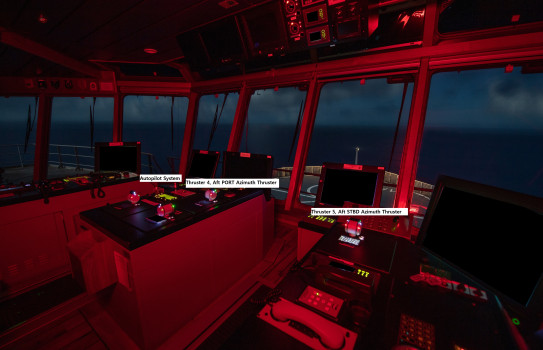
Second World War-era bombs in Vanuatu made safe by Navy divers
26 June 2024
Unfortunately you are viewing this website on an outdated browser which does not support the necessary features for us to provide an adequate experience. Please switch to a modern browser such as latest version of Google Chrome, Mozilla Firefox, Apple Safari or Microsoft Edge.
Ngā mihi nui
HMNZS Manawanui grounded and sunk off the coast of Samoa as a result of human error, the interim Court of Inquiry report shows.
The Royal New Zealand Navy ship grounded on a reef on the southern side of Samoa, on Saturday 5 October 2024 while conducting survey operations.
Chief of Navy Rear Admiral Garin Golding stood up a Court of Inquiry following the incident in order to understand the facts of what occurred.
“The direct cause of the grounding has been determined as a series of human errors which meant the ship’s autopilot was not disengaged when it should have been,” Rear Admiral Golding said.
“The crew did not realise Manawanui remained in autopilot and, as a consequence, mistakenly believed its failure to respond to direction changes was the result of a thruster control failure.
“Having mistakenly assessed a thruster control failure, standard procedures should have prompted ship’s crew to check that the ship was under manual control rather than in autopilot. This check did not occur. Remaining in autopilot resulted in the ship maintaining a course toward land, until grounding and eventually stranding.”


Track of HMNZS Manawanui before grounding and sinking.
Rear Admiral Golding said why it happened and what would come next in terms of lessons learned were still being worked on as part of the wider Court of Inquiry, which was expected to be completed in the first quarter of next year.
Rear Admiral Golding said given human error was identified as the cause, a separate disciplinary process would need to be commenced once the Court of Inquiry had concluded.
As well as the primary cause, there were also a number of identified contributing factors leading to the ship’s grounding, which will be considered in more detail during phase two of the Court of Inquiry.
“To provide some immediate assurance, we have conducted a series of audits in the Fleet and looked to implement initial lessons identified from the interim report around training, risk management, and improving relevant orders, instructions and procedures” he said.
Rear Admiral Golding said he was grateful for the support from the Transport Accident Investigation Committee, the Royal Australian Navy, and Royal New Zealand Air Force for their support to the Court of Inquiry investigation, which used evidence collected through interviews with the crew, expert witnesses and data from the ship’s recordings to find the primary cause.
The New Zealand Defence Force remains thankful for Samoa’s ongoing support regarding the situation, and is committed to working alongside Samoan authorities on the response, he said.
“I want to reassure the public of New Zealand that we will learn from this situation and that it is on me, as the Chief of Navy, to earn back your trust.
“We have incredible people within our Defence Force who answer the call to serve every day. Much of their work is risky and involves decisions that can mean life or death. No one turns up to work to have a bad day.
“In this situation, we thankfully did not lose any lives but lives have been affected nonetheless, and we continue to support and work closely with those who were onboard Manawanui on that day.”
Note: A previous picture of the bridge described the thrusters as ‘Azipods’. This label was used incorrectly, and the correct term is ‘Azimuth’. The Court of Inquiry has not identified, as yet, any issue with the performance of the thruster controls themselves.
To read our latest updates click here(external link)(external link)(external link)(external link).